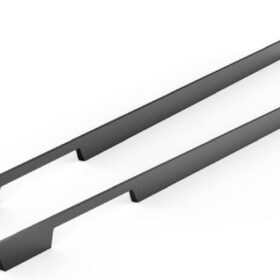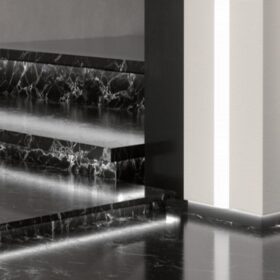Environmental Benefits of Glass Door Profiles
In today’s eco-conscious society, the demand for environmentally sustainable building materials is on the rise. Among the various options available, glass door profiles stand out for their exceptional environmental friendliness. Their production, installation, and disposal processes offer numerous benefits that contribute to a greener and healthier planet.
Reduced Carbon Emissions
Glass manufacturing involves melting raw materials at high temperatures, which can release significant amounts of carbon dioxide into the atmosphere. However, modern glass production techniques employ innovative technologies to minimize carbon emissions. The use of recycled glass and energy-efficient furnaces further reduces the carbon footprint of glass door profiles.
Enhanced Indoor Air Quality
Glass is an inert material that does not emit harmful volatile organic compounds (VOCs) into the indoor environment. VOCs can cause a variety of health issues, including allergies, respiratory problems, and headaches. By installing glass door profiles, architects and homeowners can create healthier interiors with improved air quality.
Energy Savings
Glass is an excellent thermal insulator, which means it helps to retain heat in winter and keep out the heat in summer. By reducing heat transfer, glass door profiles minimize the need for heating and cooling, leading to significant energy savings. This not only reduces energy bills but also contributes to reducing greenhouse gas emissions.
Sustainable Raw Materials
Glass is made from natural materials such as sand, soda ash, and limestone. These materials are abundantly available and can be recycled indefinitely without losing their properties. The use of recycled glass in the production of glass door profiles further promotes resource conservation and reduces landfill waste.
Durable and Low-Maintenance
Glass door profiles are extremely durable and require minimal maintenance. Their non-porous surface resists moisture, dirt, and wear, eliminating the need for frequent cleaning and replacement. This durability reduces landfill waste and the use of harmful cleaning agents.
Recyclability and Reusability
At the end of their lifespan, glass door profiles can be conveniently recycled into new glass products. The process of recycling glass consumes less energy than producing new glass, further reducing carbon emissions. Additionally, glass door profiles can be reused in various applications, extending their lifecycle and reducing waste.
Conclusion
Glass door profiles offer numerous environmental benefits that make them an ideal choice for sustainable building projects. Their low carbon emissions, enhanced indoor air quality, energy efficiency, sustainable raw materials, durability, and recyclability contribute to a more eco-friendly and healthier built environment. As the demand for sustainable materials grows, glass door profiles are poised to play an increasingly significant role in shaping a greener future.
-
2024-11-29Top Trends in Modern Kitchen Cabinet Pulls for 2024
-
2024-11-28The Ultimate Guide to Modern Kitchen Cabinet Pulls- Materials, Styles, and Tips
-
2024-11-27Elevate Your Kitchen Design with These Must-Have Modern Cabinet Pulls
-
2024-11-26Sleek and Stylish- The Best Modern Kitchen Cabinet Pulls for a Contemporary Look










